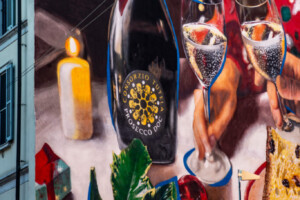The pandemic has weighed heavily on the budgets of Italian wineries. Confirming a picture already outlined by WineNews at the beginning of the year, when the companies interviewed (35 leading Italian wine producers) estimated in most cases a loss in turnover between -10% and -20%, comes the study signed by Ismea and Wine Meridian, on a sample of over 300 companies. Half of them hypothesized losses between -20% and -30%, 15% hypothesized drops higher than -50%. Almost one in four, on the other hand, claims to close the year 2020 on a par with 2019, while 13% even estimate growth (declared as between +10% and +30%). As is now well known, the biggest impact on the budgets of most companies has been the very strong restrictions on catering and the stop on international tourism, problems that are far from being overcome. Among the main consequences of the Covid-19 pandemic, companies indicate a reduction in sales of their products in the Horeca channel: 25% of those interviewed declare a total block in demand from this distribution channel, while 36% indicate a strong reduction. Another important consequence concerns the reduction in product exports (strong reduction in foreign sales for 36% of the companies interviewed). With a crisis, that of the pandemic, that has added to a situation that is less flourishing than it sometimes appears, given that less than half of the companies (47%) considered the situation "good" before the arrival of the emergency.
Emphasizing that the most mentioned weaknesses are mainly the inadequacy of the commercial structure, the scarce communication activity and wines not well recognized by wine critics. Apparently, it has been considered a lesser problem the price factor (too high compared to market standards) and, even less, the non alignment of products with market trends.
An interesting aspect investigated by the survey is the distribution mosaic used by Italian companies. From the analysis it emerged that 92% of the companies surveyed use the Horeca channel, but only 11% in exclusive mode, and this shows how even the smallest companies have for some time undertaken a process of diversification of distribution channels.
With regard to the issue of diversification of distribution channels, the survey shows that 40% of the sample surveyed use the Horeca, direct sales and e-commerce channels at the same time: a strategy that, as we will see later, has proved successful even in a complex phase like the current one; 20% of the companies surveyed use the Horeca, large-scale retail and direct sales channels, but not e-commerce (not even during the current pandemic phase); 15% of the companies interviewed, on the other hand, use all distribution channels (Horeca, large-scale retail trade, direct sales, e-commerce); about 10% use only Horeca and e-commerce; only 5% of the companies interviewed use only direct sales (and a very small percentage in the local Horeca). Obviously, the world of production has not been the only one to suffer from the crisis, but also that of the wine trade, as shown by the answers of over 100 buyers interviewed: half estimated losses of between -20% and -30%, and more than one in three estimated losses of over -50%.
The scenario of the near future, clearly, is characterized by great uncertainty, however some trends are emerging. According to the majority of the wineries, in the next months e-commerce will continue to grow, and there will also be an expansion of wine tourism, whereas half of the wineries think the demand for “sustainable” wines will grow, whereas one out of three thinks about a strong downsizing of the Horeca channel. Two other important future evolutions were identified in the increase of attraction/interest towards the most renowned wine brands (both as appellation and private labels), and a higher concentration on wines in the “first price” range. The strategies to put in place in order to react? According to the companies, in this order, it starts from the growth of the recognizability of their wines, both in terms of wine and communication, but very important is also the greater diversification of distribution channels, with the large-scale retail trade in focus, passing through the improvement of the welcome in the winery, of communication activities, a greater training of human resources, and further investments both in e-commerce and direct selling.
Copyright © 2000/2025
Contatti: info@winenews.it
Seguici anche su Twitter: @WineNewsIt
Seguici anche su Facebook: @winenewsit
Questo articolo è tratto dall'archivio di WineNews - Tutti i diritti riservati - Copyright © 2000/2025









































































































































































































